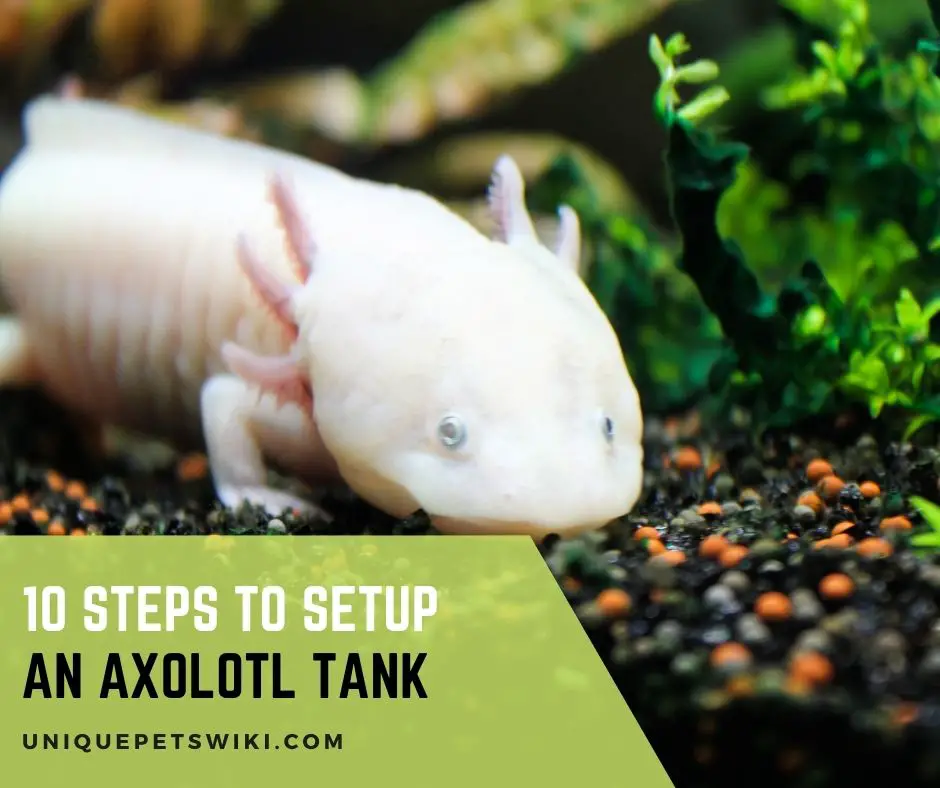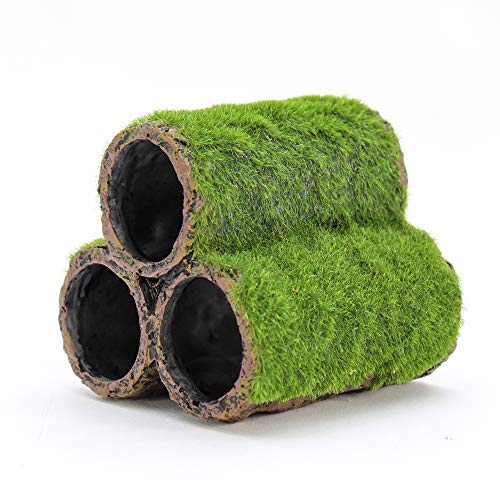Axolotls are a type of salamander that originates from the lakes Xochimilco and Chalco in Mexico.
Unlike salamanders, axolotls spend their lifetime in the water, making them unique creatures. As a beginner hobbyist, you may be wondering how you can set up an axolotl tank.
Setting up an axolotl tank is not as difficult as many people believe. You will need a sturdy and long aquarium with accessories like a thermometer, gravel vacuum, filter, hides, and so on.
In this article, we will highlight everything that you will need to setup an axolotl tank.
10 Steps to Setup an Axolotl Tank
You can follow several steps when setting up an axolotl tank. The steps usually depend on your ideas of installing a tank. Some of the things you will need to set up a perfect axolotl tank are stated below.
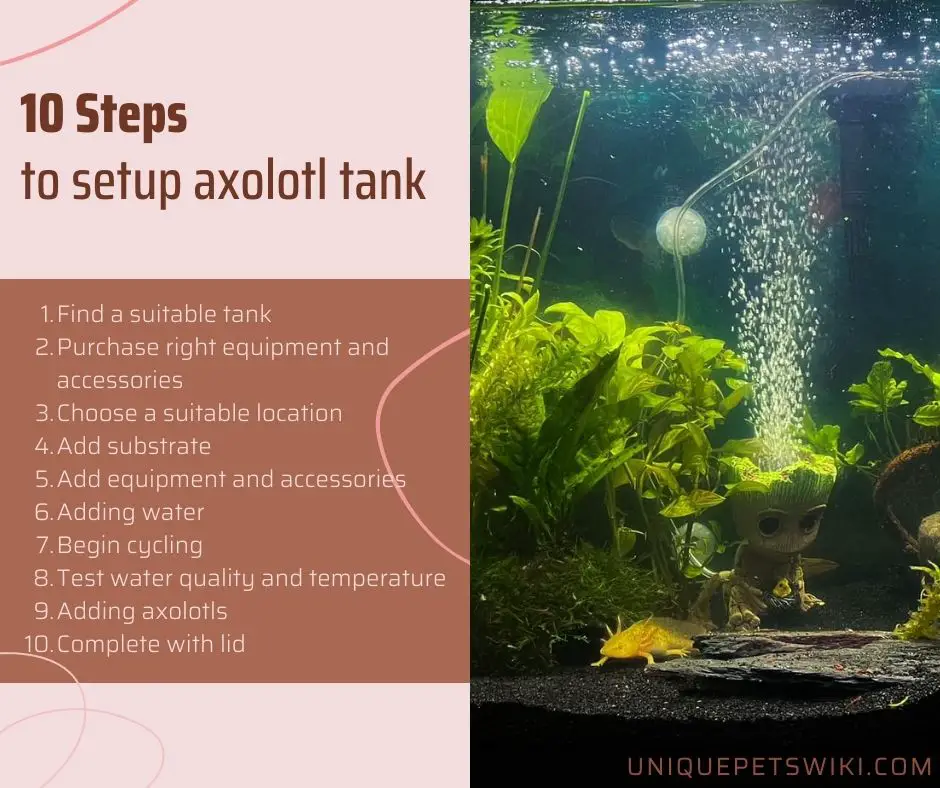
Find a Suitable Tank
Using the right tank type is crucial when setting up a tank for aquatic animals such as axolotls.
Many believe that you can keep an axolotl in a 10-gallon aquarium. However, it will not be enough to sustain your axolotl for a long time.
It is recommended that you use at least a 20-gallon tank for your axolotl.
Furthermore, axolotls are bottom dwellers and will require a longer tank than a tall one since they don’t need vertical space. You will need to add 10 gallons if you plan to house axolotls in pairs.
It is better to use larger tanks for axolotls as it is quite easy to maintain the water quality. Furthermore, there will be lots of room for your axolotl to explore when it grows up.
Also read: Cost Of Axolotl Tank Set Up
Purchase Right Equipment and Accessories
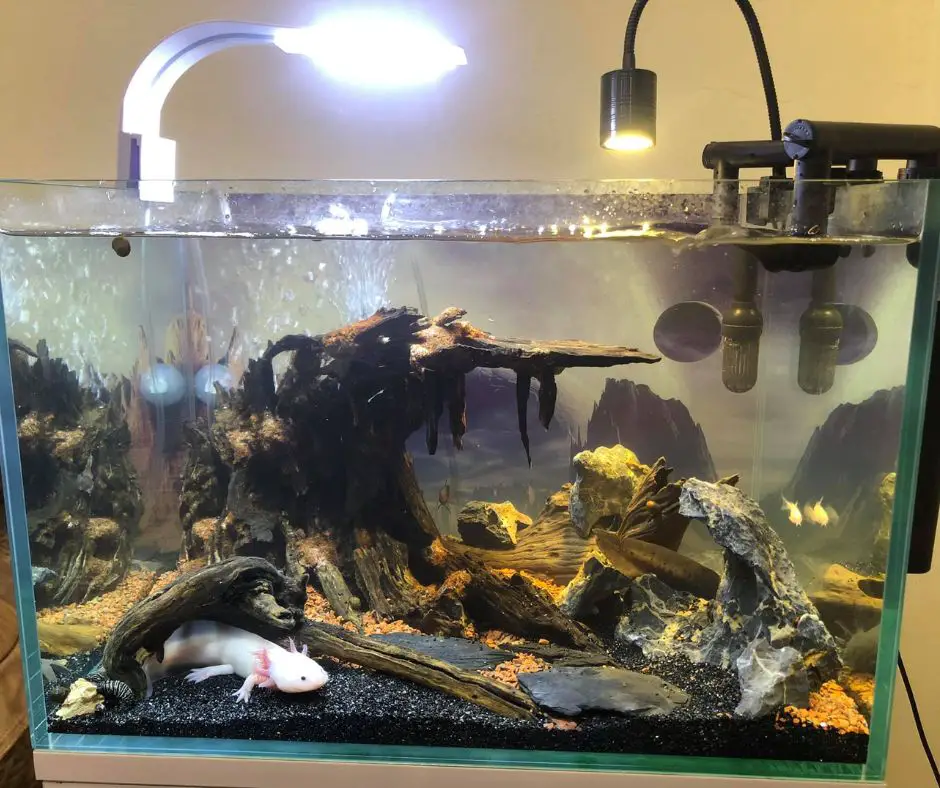
There are several accessories and equipment that you will need to buy when setting up an axolotl tank.
You will need a gravel vacuum for sifting through the sand and sucking up waste in your axolotl tank. Another thing you will need is a sponge or bubble filter to help keep the water quality in check.
Some of the necessary equipment you may need are an aquarium chiller, thermometer, water quality test kit, and so on. You can buy these accessories online or from pet stores.
Also read: 6 Best Axolotl Accessories
Choose a Suitable Location
You can place your axolotl tank in a well-lit area like the living room or bedroom.
However, you need to ensure that it is not under direct sunlight. This is because axolotls are sensitive to bright light and can get stressed.
Furthermore, keeping the tank under direct sunlight can also increase the water temperature in their enclosure.
Another thing is to avoid housing your axolotl in a high-flow area as this can stress out your axolotl, leading to death.
Add Substrate
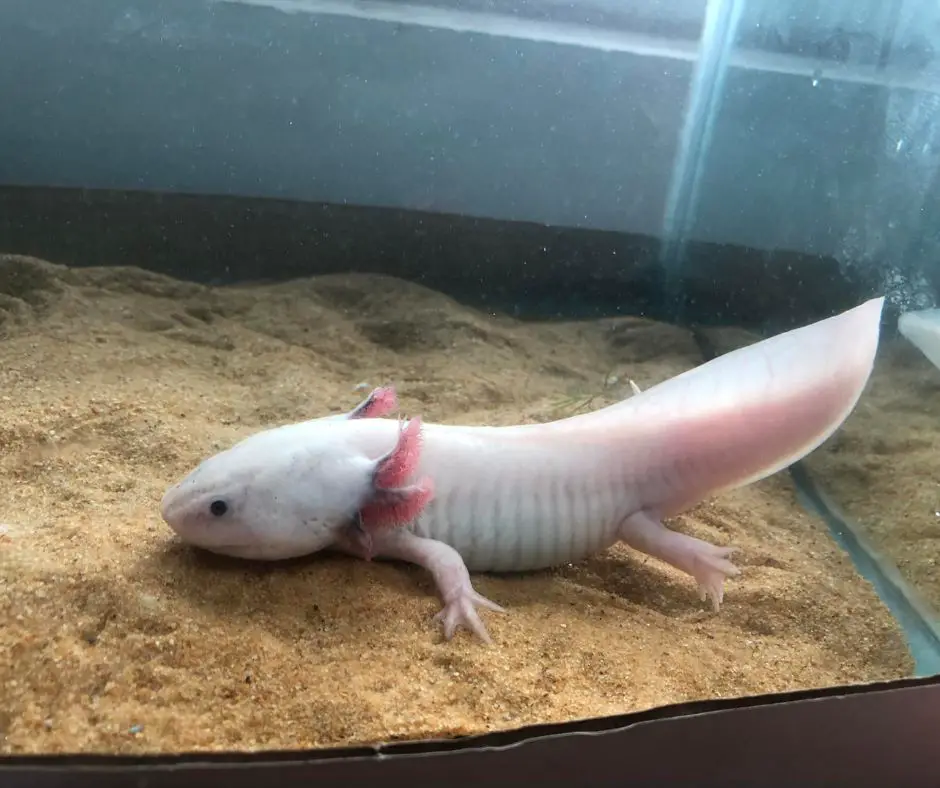
You will need to add substrates to the bottom of your axolotl’s tank to help provide support. However, axolotls are very curious and may suck on the substrate.
Therefore, you need to avoid using small stones or gravels that your axolotl can swallow as a substrate as they can become impacted.
Furthermore, you need to avoid using sharp stones or glass chippings for their cage as they can cause injury.
A great thing to do is to use a bare bottom tank for baby axolotls for easy cleaning and to prevent ingestion. You can then use natural sand, large rocks, gravel, or slate tile as a substrate for older axolotls.
All you have to do is rinse the substrate before you add them to the tank.
Some of the substrates that you cannot use for axolotls are small rocks, sharp stones, broken shells, crushed rock, glass chippings, and glass stones or marbles.
Also read: 5 Best and Worst Axolotl Tank Substrates
Add Equipment and Accessories
It is recommended that you add decors in your axolotl’s tank. This will help provide a space for your axolotl to swim around and hide whenever they feel stressed.
Some of the accessories you can add to your axolotl’s tank are stated below.
Hides
Axolotls require a hide where they can retreat during the day to feel safe. It is recommended to place 1 or 2 hides per adult axolotl.
The hides should also have lots of space for your axolotl to fit its whole body comfortably.
You can place the hide far away from each other so your axolotl can choose a suitable place to hide.
Note: you need to ensure the hides do not have sharp edges to prevent hurting your axolotl.
Furthermore, the hides should not be dyed as they can affect the water parameter, making the water toxic to your axolotl.
Penn-Plax Hideaway Pipes Aquarium Decoration Realistic Look
- Three stacked hideaway pipes with realistic looking moss add color and texture to your aquarium. Bright green moss adds a unique look to your tank and mimics the color seen in nature.
- This aquarium decoration provides visual interest for you and your fish. Holes provide a space to pass through, to rest, or hide reducing stress and aggression.
- This pipe hideaway is perfect for cichlid tanks since this fish is territorial and must create their own space. This aquarium ornament mimics what is found in an oceanic environment.
- Made of safe durable resin, this aquarium decoration is safe for use in both freshwater and saltwater aquariums. Pipes measure 3 inches long by 3 inches wide and 2.8 inches high.
- Age range description: All Life Stages
Last update on 2022-12-29 / Affiliate links / Images from Amazon Product Advertising API
Plants
You can also add plants to your axolotl enclosure. Plants will help add to the tank’s beauty, serve as a hiding spot for your axolotls, and live plants can keep water parameters stable.
It is recommended that beginner hobbyists use artificial plants for your axolotl tank.
A live plant suitable for axolotl’s tank should require low temperature, is sturdy, and can grow well under low light.
The plant should also be safe to eat and non-toxic to the axolotl and cannot cause injury.
The location you can place the plant in your axolotl’s tank will depend on the type of plants you are using.
You can place live plants with large leaves like Java fern can be placed in the background or middle of the tank. On the other hand, you can place short plants in the foreground of the tank.
When using a fake plant, you need to ensure that the leaves do not have sharp edges to prevent hurting your axolotl.
Also read: 20 Best Plants for Axolotl
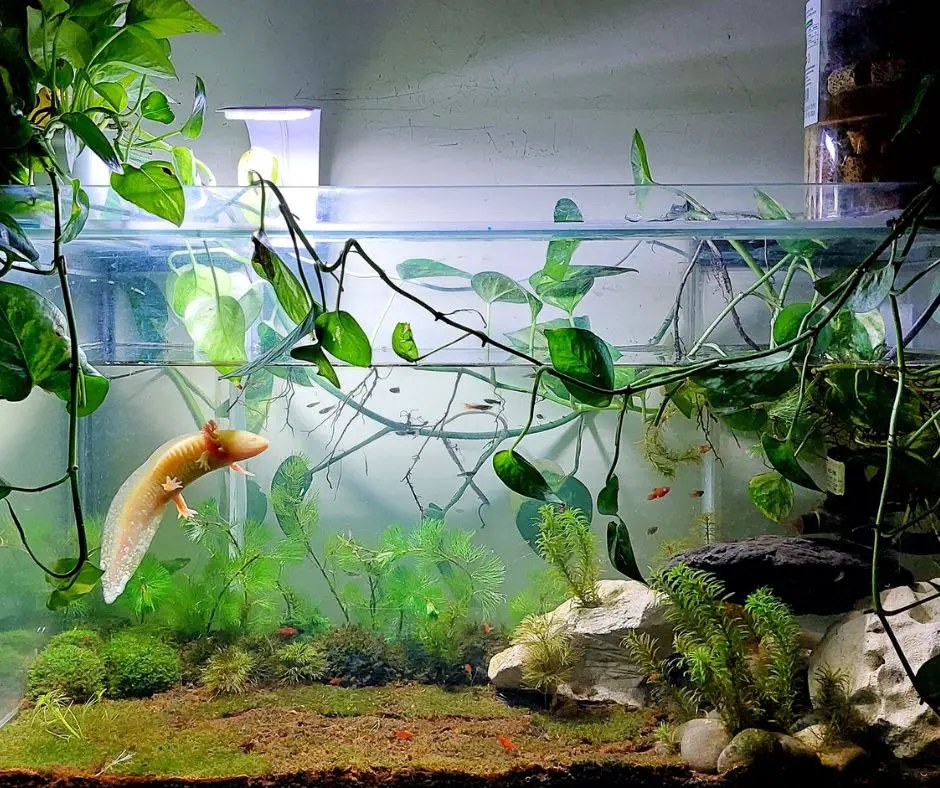
Filtration
Generally, axolotls produce lots of waste which can affect the water quality in their tank very quickly. Therefore, it is recommended to put a filter in their enclosure to help filter out the waste.
A suitable filter for an axolotl tank should have an adjustable flow rate to help ensure you can control the filter output.
Installing a filter in an axolotl tank is quite simple, and it usually depends on the type of filter you buy.
You will need to hang some filters while some are in the tank. You have to be concerned about putting the filter in your axolotl tank before you cycle the tank.
Also read: 7 Best Water Filter For Axolotl
Cooler or Chiller
Axolotls require a cold-water tank to stay healthy and active. Therefore, they don’t respond very well to high temperatures and can easily get stressed by them.
Furthermore, stress due to overheating can lead to health problems and even be fatal.
You can cool the water temperature in an axolotl’s tank using an air stone. You can use a fan to blow water directly across the tank’s surface to keep the tank cool.
However, you can also invest in an aquarium chiller to cool the tank.
Installing an aquarium chiller usually varies based on the type of chiller you buy. Most aquarium chillers are easy to set up, and the manuals are straightforward.
Also read: 5 Best Water Cooler For Axolotl
Lighting Requirements
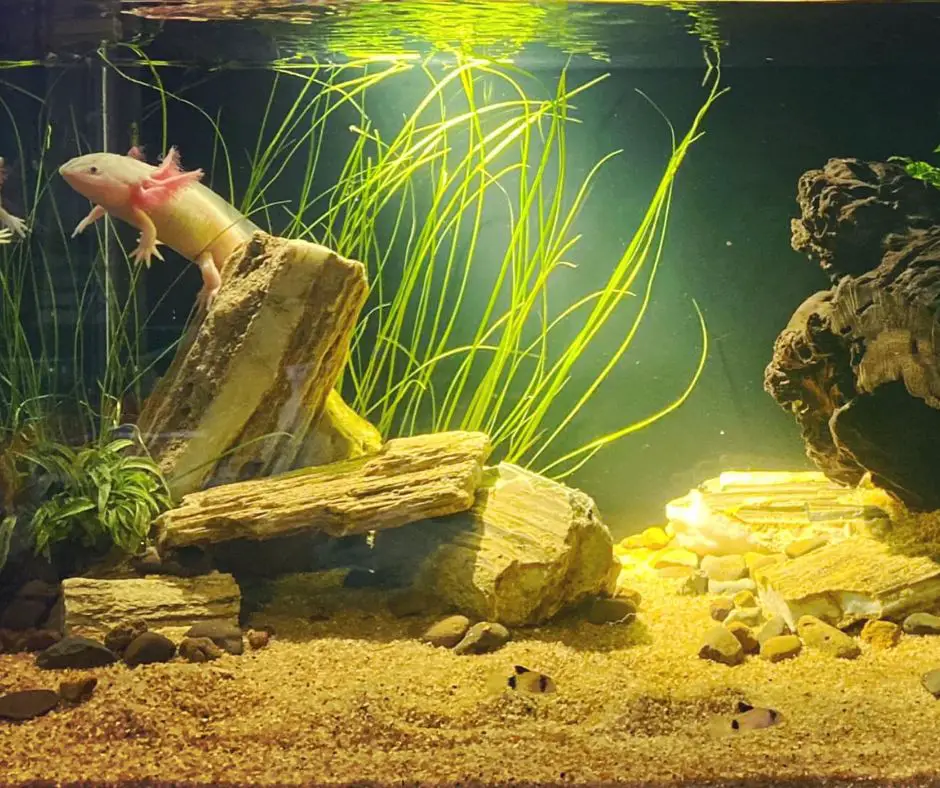
Axolotls are usually very sensitive to bright light and prefer a tank without any light to stay happy.
The best way to solve the lighting issue in the axolotl tank is to place the tank in an appropriate spot. This will help to ensure natural light comes into the tank and they can get normal daylight.
However, if you cannot find a suitable spot for this, you may need an artificial light if you have live plants in the tank.
You can use a dimmable light to help ensure your axolotl does not get overwhelmed. A great way to use the light is not to run the lights constantly and only use it for 6-8 hours daily.
Note: since axolotls do not require high temperatures, you should opt for lights that do not produce too much heat.
Adding A Thermometer
A thermometer is a crucial accessory for your axolotl’s cage to help measure the temperature in the tank.
The ideal thermometer for your axolotl’s tank is a dual probe thermometer to help ensure you get the correct reading.
Installing a thermometer will also depend on the type of thermometer you buy. You will need to attach some thermometer to your axolotl’s tank glass with an adhesive or magnet.
While some thermometers just require a probe to get the required reading.
Zacro LCD Digital Aquarium Thermometer
- Submerge probe into fish tank to measure water temperature (Submerge probe only, do not submerge thermometer in water)
- Easy to apply suction cup and easy to read LCD screen; Temperature readings to within 0.1 degree
- Large, easy to read LCD display. Compact design for discrete use
- Temperature range -50 degree Celsius~ + 70 degree Celsius; Operating temperature -10degree Celsius~ +50degree Celsius
- Powered by one LR44 button cell (included)
Last update on 2022-12-29 / Affiliate links / Images from Amazon Product Advertising API
Adding water
Water is an important aspect of setting up an axolotl tank. Therefore, the water you can add to your axolotl tank needs to be at an optimal level to help avoid stress and death.
Now that you have set up your axolotl’s tank, the next thing to do is add water. You can use spring water for this process.
However, if this is not available, you can use tap water. You will need 55 liters of water to fill a 20 gallon tank.
Before adding the tap water to the tank, use two teaspoons of aqua safe and One Tetra-O Start Zyme tablet.
Then allow the water to sit while the chlorine and chloramines in the water dissipate. You can also use a water conditioner to remove the chemicals from the tap water.
You can then check the water quality parameter to ensure it is at an ideal level before you add it to the tank.
Also read: Full Requirements & Water Conditions for Axolotl in Captivity
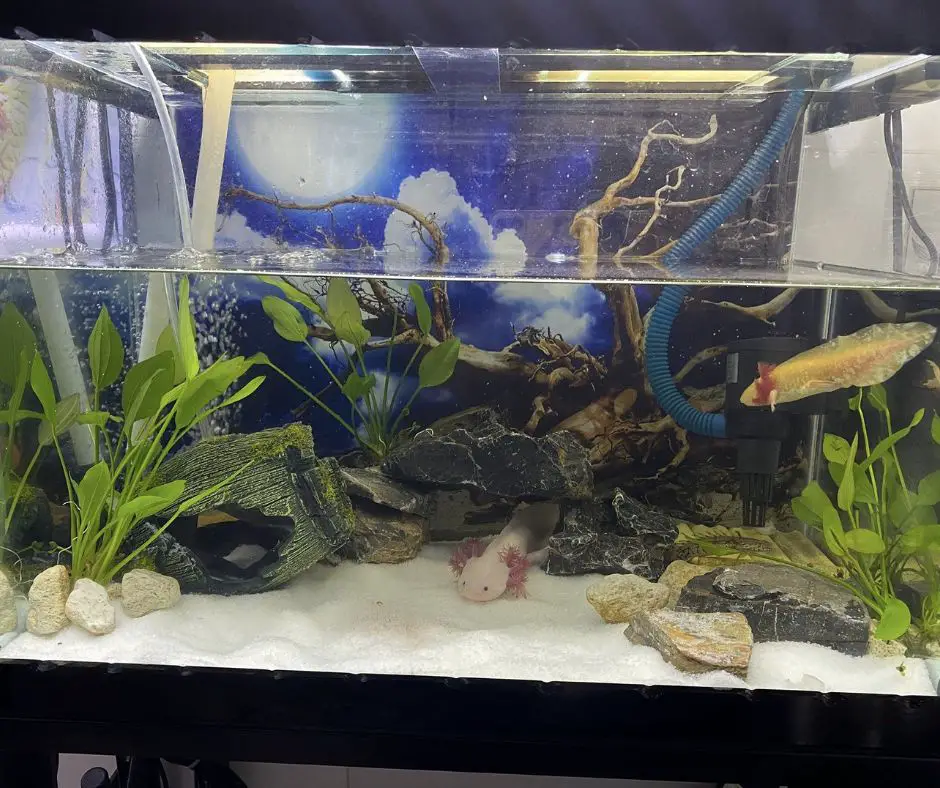
Begin Cycling
The next thing to do after setting up your axolotl tank before introducing your axies is to cycle the tank.
Cycling is the process where you allow the aquarium to accumulate useful bacteria. The bacteria help to make the tank livable for your axolotls.
You can cycle your axolotl tank by adding unscented ammonia to the tank and leaving it for some time.
You will then test the water regularly until the water parameter is at the desired level before adding your axolotls.
Also read: How To Cycle Tank For Axolotl: 7 Steps for Beginners
Test Water Quality and Temperature
One of the important parts of caring for an axolotl is regularly checking the water conditions.
This is because axolotls are very sensitive to changes in the water parameter in their tank and can be fatal if not detected early.
The best thing is that you can achieve their ideal water parameter with relative ease. Some of the ideal water parameter levels that axolotls need are stated below.
- Water temperature: 60-64oF or 16-18oC
- Acceptable and ideal pH levels: 6.5-8.0 and 7.4-7.6, respectively.
- Nitrate: less than 40ppm
- Nitrites: 0ppm
- Ammonia: 0ppm
- Water hardness: 7-8 dKH (slightly hard)
Also read: Axolotl Temperature Control
Adding Your Axolotls
After you have cycled your axolotl tank, the next thing is to introduce your axolotl to its new habitat.
There are two ways for introducing your axolotl to a new aquarium. The step you will follow will depend on the way you buy your axolotls.
The proper way of introducing an axolotl that has not spent more than 24 hours in a bag is stated below.
- Gently pour the water and your axolotl into a large bowl or container.
- Add a quarter cup of water from the cycled tank to the container every 5 minutes for 30 minutes.
- Using a net, gently remove your axolotl from the container and place it in the new aquarium after 30 minutes.
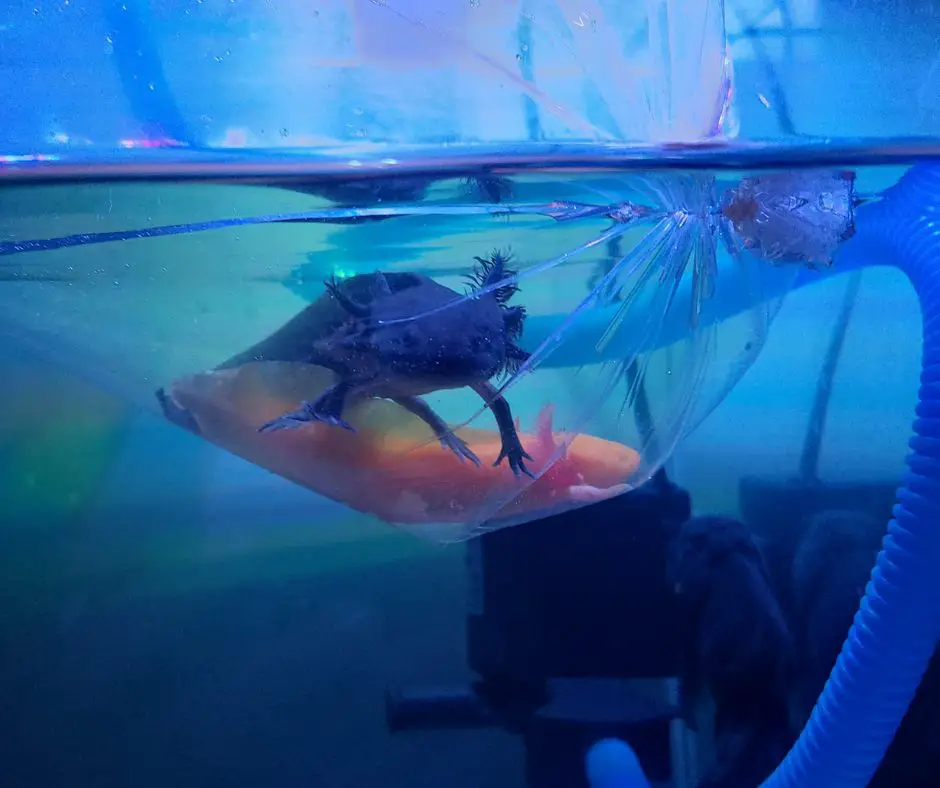
Note: you should avoid pouring the water from the container into the new tank.
The second method is suitable for axolotls’ owners if the axolotls have been in the bag for more than 24 hours.
This means you will need to acclimatize the axolotls as quickly as possible following the steps below:
- Place the bag holding your axolotl into the cycled aquarium without opening the bag.
- Wait for 15 minutes to allow the water temperature in the aquarium and bag to equalize.
- Use a net to remove the axolotl and place it into the new aquarium.
Note
- Avoid spilling any of the water from the bag into the new aquarium.
- Switch off any aquarium lights for 24 hours to help reduce stress while your axolotls settle into the new tank.
Complete With Lid
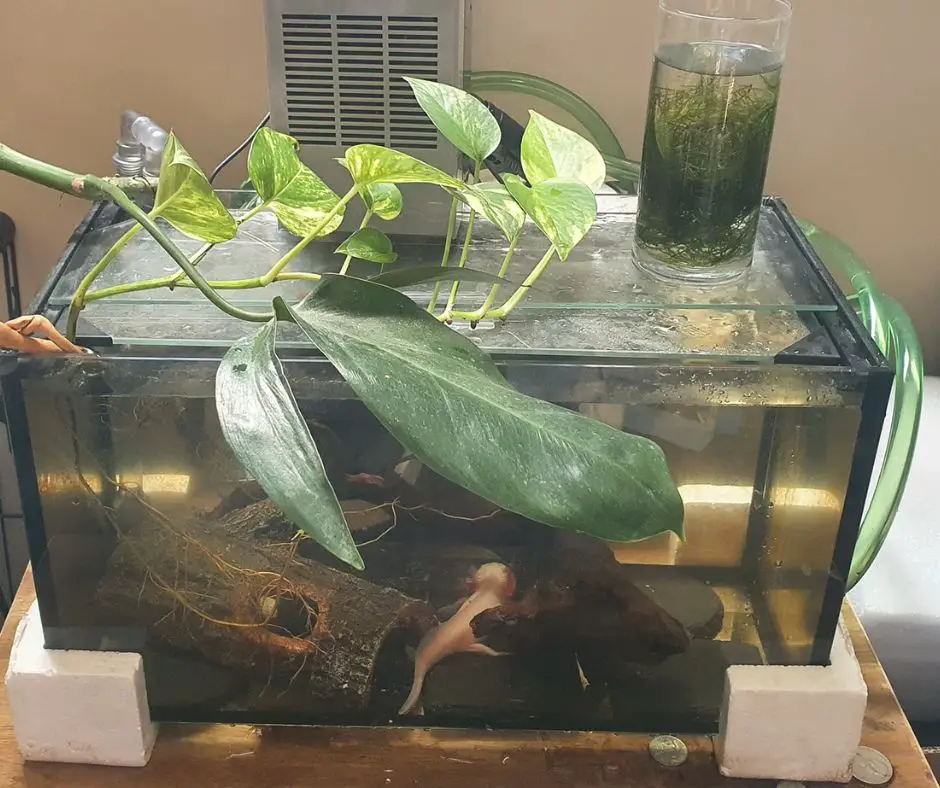
Although axolotls are bottom-dwelling fish, they do swim up to the water surface from time to time to gulp air.
They can also jump out of the water. Therefore, you will need to put a lid on the top of your Axolotl’s tank.
This will help to prevent your Axolotl from falling out and injuring itself. Furthermore, axolotls can get stressed and dry out if they fall out of their tank.
A lid will also help Axolotl’s owners to keep foreign bodies from falling into the tank.
It is recommended that there is a 2 inches distance between the water level and the tank lid.
The tank lid should also have holes to help allow good airflow and prevent the buildup of bacteria and algae in the tank.
Axolotl Tank Maintenance
Caring for Axolotl begins with proper aquarium maintenance to help ensure the water quality is at an optimal level. Some of the ways to maintain your Axolotl’s tank are stated below.
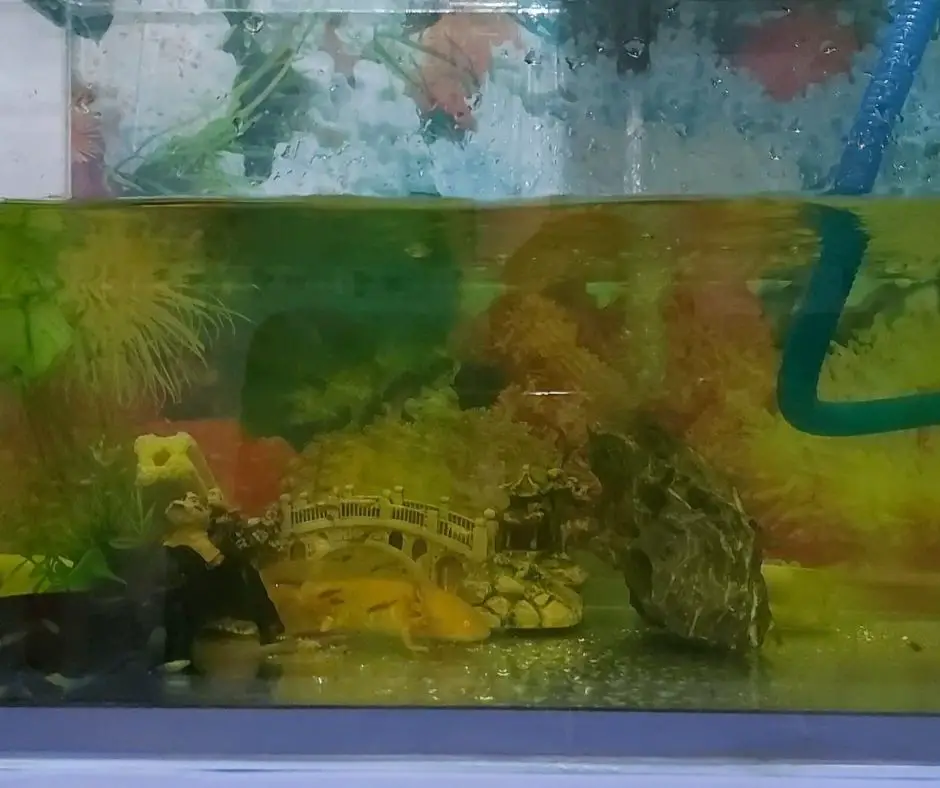
Clean The Tank Frequently.
It is recommended that you change 20% of your Axolotl’s water weekly to help control the water quality in the aquarium.
You can use a gravel vacuum to siphon out the waste from your tank’s bottom.
Water Testing Kits
Like any fish, you will need a water test kit if you want to care for your axolotls. This is because axolotls require a good water quality and can develop health problems quickly if the water quality gets bad.
You will need to test your Axolotl’s tank regularly to help ensure the variety of chemicals in their tank are ideal.
You can buy the API Freshwater Master Test Kit to monitor the water quality.
API Water Test Kit
- Contains one (1) API FRESHWATER MASTER TEST KIT 800-Test Freshwater Aquarium Water Master Test Kit, including 7 bottles of testing solutions, 1 color card and 4 glass tubes with cap
- Helps monitor water quality and prevent invisible water problems that can be harmful to fish and cause fish loss
- Accurately monitors 5 most vital water parameters levels in freshwater aquariums: pH, high range pH, ammonia, nitrite, nitrate
- Designed for use in freshwater aquariums only
- Use for weekly monitoring and when water or fish problems appear
Last update on 2022-12-30 / Affiliate links / Images from Amazon Product Advertising API
Water Conditioner
Most axolotl owners use chlorinated tap water in their tanks. However, chlorinated water can destroy the good bacteria in the aquarium and burn the axolotls.
Therefore, you will need a water conditioner to help neutralize the harmful chemicals.
Using a water conditioner will help make the water safe for your axolotls and help them breathe properly. It will also encourage proper skin health.
Algae Scraper
Another part of axolotl tank maintenance is to remove the algae from the tank. Algae can grow on the sides of the tank and the tank accessories if you overuse it for a long time.
You will need an algae scraper to scrape off the algae from the tank.
Laifoo Aquarium Siphon Vacuum Cleaner
- FUNCTION --- Easy to control, convenient to siphon fish faeces, impurities, turbid water out of fish tank.
- 5 Feet HOSE --- Made from clear & elastic plastic. Makes it more durable and anti-kinking. Harmless to fishes & No peculiar smell.
- GRAVEL TUBE --- Sinkable, with a detachable filter screen inside. Will not disturb fish or decor when it's working.
- SIPHON BALL --- All you need to do is to pinch it several times, water will flow out automatically. Without striking a blowing.
- WARRANTY --- For 3 months after the date of purchase, we take care of all quality-related issues with a FREE replacement or refund. If you have any questions, do not hesitate to contact our professional after-sale service.
Last update on 2022-12-29 / Affiliate links / Images from Amazon Product Advertising API
Conclusion
Axolotls are adorable pets and one of the unique creatures you can keep as a pet. Although they require special care, axolotls are mind-blowing pets to keep as a pet.
Setting up an axolotl tank is quite easy, and you can easily keep them happy and healthy if you can keep a proper living condition.
After reading this article, you should have no problem setting up an axolotl tank.
You can write to us in the comment section if you have any comments or questions about setting up an axolotl.
Also read: 3 Best Axolotl Aquarium Setup Ideas
